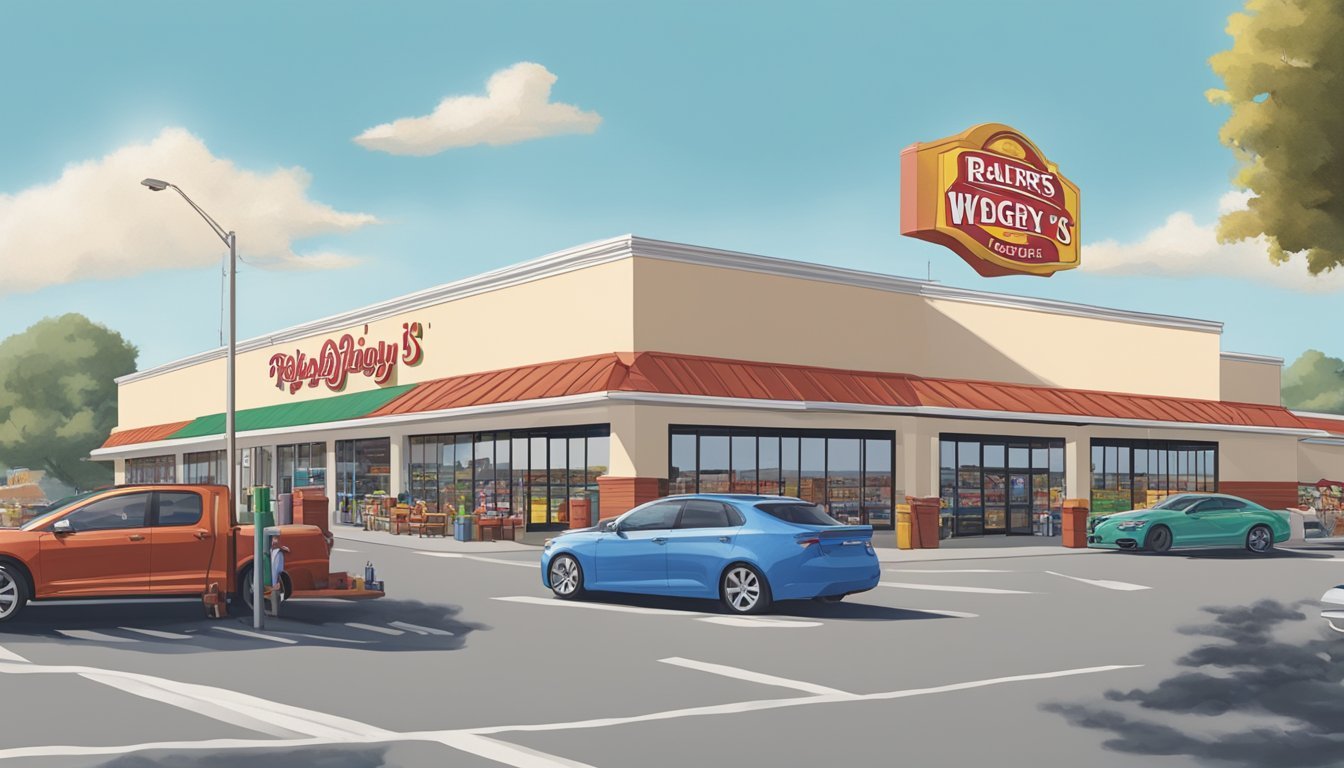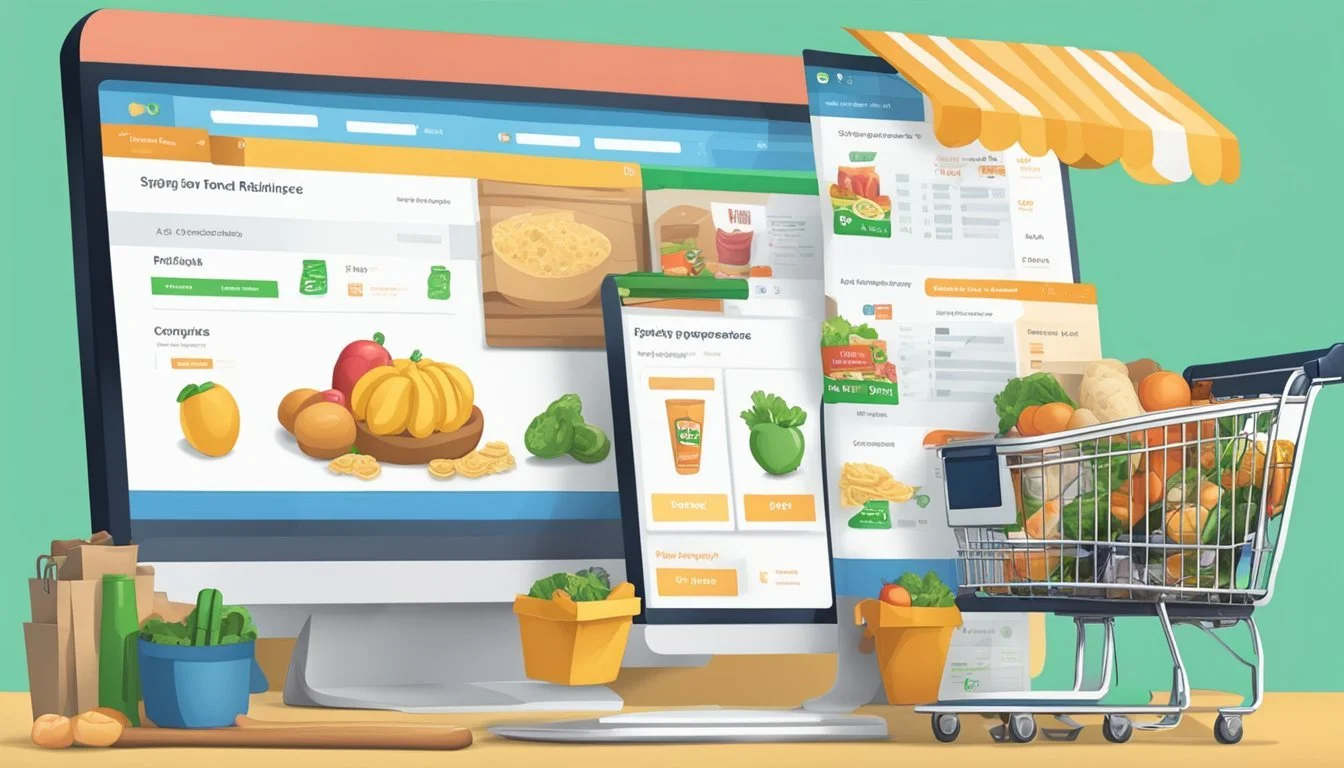Is Piggly Wiggly Cheaper Than Ralphs?
Comparing Grocery Store Prices
Part of Our Grocery Store Guide with Details on Piggly Wiggly Prices and Ralphs Prices
When it comes to grocery shopping, consumers are always on the lookout for the best deals to stretch their dollar further. Comparing Piggly Wiggly and Ralphs is a common endeavor for many shoppers aiming to find which store offers the more wallet-friendly option. The debate over which store is cheaper involves examining a variety of factors, including product prices, the assortment of goods offered, and the overall shopping experience.
With Piggly Wiggly, often affectionately known as “The Pig,” and Ralphs operating in different regions of the United States, each has cultivated a loyal customer base. Piggly Wiggly, with its strong presence in the Southern and Midwestern states, is recognized for its cost-effective pricing on many items. On the other hand, Ralphs, a mainstay in California, is part of the Kroger family, one of the largest grocery retailers in the country, known for its regular promotions and discounts. Determining which store offers lower prices requires a closer look at both grocery chains' pricing strategies and the savings opportunities they present to shoppers.
Overview of Piggly Wiggly and Ralphs
Piggly Wiggly and Ralphs are two recognized names in the American supermarket landscape, each with its own unique place in grocery retail history.
History of Piggly Wiggly
Piggly Wiggly, founded by Clarence Saunders in 1916 in Memphis, Tennessee, holds the distinction of being the first self-service grocery store. This innovative concept significantly changed the shopping experience by allowing customers to hand-pick their groceries instead of relying on store clerks. Saunders' approach not only revolutionized retail but also helped manage rising grocery costs of the time.
History of Ralphs
In contrast, Ralphs is a mainstay of Southern California grocery culture, originating in 1873. It established itself as a pioneer in combining everything from meat and produce to groceries under one roof. Ralphs has been a constant in the development of the supermarket model and is known for its promotions and rewards program that adds value for its patrons.
Comparative Analysis
In assessing Piggly Wiggly and Ralphs for grocery shopping, one must consider multiple factors such as pricing, product range, quality, and store brand comparisons. These components are integral to determining which supermarket may offer better value for shoppers.
Price Comparison
Piggly Wiggly is recognized for competitive pricing, especially for essentials such as dairy, bread, and canned goods. For budget-conscious consumers, deals on these staple products might tip the scales in favor of Piggly Wiggly over Ralphs.
Dairy Products: Piggly Wiggly typically undercuts Ralphs on milk and cheese prices.
Bread: Comparable prices with occasional discounts at Piggly Wiggly.
Canned Goods: Regular promotions at Piggly Wiggly offer savings over Ralphs’ standard pricing.
Product Variety and Availability
Ralphs generally offers a broader selection, in particular with regards to produce and meats. Ralphs might be the better option for shoppers seeking variety or specific gourmet items.
Produce: Ralphs has a larger variety of fruits and vegetables.
Meats: More premium and organic meat options are often found at Ralphs.
Quality of Goods
Both stores maintain quality standards, yet Ralphs may edge out with higher-grade produce and meats. In contrast, Piggly Wiggly is reputed to provide a satisfactory quality commensurate with its pricing, particularly for its store brands.
Produce: Ralphs is perceived to have fresher, higher-quality options.
Meats: Ralphs offers diverse quality levels, including organic and grass-fed choices.
Store Brand Comparisons
Comparing store brands of Piggly Wiggly and Ralphs can reveal significant price differences while maintaining quality. Both stores have their own brands that usually offer better prices than national brands, with Piggly Wiggly often perceived as more budget-friendly.
Condiments: Store brand ketchup and mustard at Piggly Wiggly are less expensive than Ralphs.
Dairy: Store brand milk, cheese, and butter at Piggly Wiggly typically sell for less compared to Ralphs' equivalents.
Discounts and Savings
Consumers often prioritize discounts and savings when choosing a grocery store. Piggly Wiggly and Ralphs compete to offer the best value through various strategies, notably coupons and deals, loyalty programs, and weekly sales.
Coupons and Deals
Piggly Wiggly is known for providing savings through weekly ads that feature special discounts on an array of products. The store issues physical coupons and has a newsletter that may contain exclusive deals or coupon codes. Meanwhile, Ralphs has leveraged technology to offer digital coupons to its customers. These digital offers can typically be accessed via Ralphs' app, making it convenient for users to save money.
Loyalty Programs
Ralphs offers a loyalty program where customers can accumulate points for purchases which can translate into savings on future shopping trips or fuel discounts. Moreover, its rewards program is tied to a digital account, allowing customers to track and redeem their rewards easily. On the other hand, Piggly Wiggly has a loyalty card program designed to offer customers discounts, although it may not be as comprehensive as Ralphs’ rewards system.
Weekly Sales
Both Piggly Wiggly and Ralphs provide a variety of weekly sales that can offer significant savings. They typically advertise weekly deals in flyers and online platforms. At Piggly Wiggly, shoppers can find discounts on select items in their weekly ad, while Ralphs may offer a price adjustment policy that can help customers save money if a product they've purchased is later listed at a reduced price.
Consumer Experience
The consumer experience at Piggly Wiggly and Ralphs varies across different verticals including customer service, store atmosphere, and checkout experience. Each supermarket chain has its own unique approach to providing convenience and services tailored to their customer base.
Customer Service
Piggly Wiggly is recognized for its commitment to exceptional customer service, which includes its efforts in community involvement. It distinguishes itself by cultivating a supportive and responsive environment for shoppers. Ralphs, while part of a larger chain, also focuses on customer service but may have a different approach given its size and operational scope.
Store Atmosphere
Shoppers at Piggly Wiggly are greeted with a friendly store atmosphere emphasizing cleanliness and a local vibe. Ralphs offers a modern feel, clean aisles, and a layout designed for an efficient shopping experience. Both retailers strive to create an inviting atmosphere but may differ in layout and design sensibilities, reflecting their respective brand identities.
Convenience and Services
Both Piggly Wiggly and Ralphs offer various convenience and services to meet the needs of their customers:
Piggly Wiggly:
Community-oriented events
Locally sourced products
Ralphs:
Online shopping options
Delivery and curbside pickup
While both chains prioritize convenience, the specific services provided may cater to different customer preferences based on lifestyle or location.
Checkout Experience
The checkout process is an integral aspect of customer satisfaction. Piggly Wiggly often features traditional manned checkouts to foster interaction, whereas Ralphs incorporates a variety of checkout features, including self-checkout options for those seeking a quick exit. Both stores endeavor to maintain a streamlined process to minimize wait times and enhance the overall shopping experience.
Shopping Tools and Online Presence
When comparing Piggly Wiggly and Ralphs, their tools for enhancing the shopping experience and their online presence, including website functionality and online shopping features, stand out as critical factors for consumers in today's digital age.
Website and App Usability
Piggly Wiggly maintains a user-friendly website, offering essential tools like a shopping list feature to streamline the in-store experience. While they may lack a dedicated mobile app, customers can access store information and specials through their browser. Their online brand recognition is bolstered via active engagement on platforms like Facebook, but without the integration of services like Shop Pay installments or Gmail for personalized offers.
Ralphs, on the other hand, benefits from the backing of the Kroger family of stores, providing a robust website and mobile app. The Ralphs app is comprehensive, allowing users to manage shopping lists, view expert reviews, and take advantage of digital coupons. They feature a seamless integration with PayPal Pay Later and other flexible payment options, catering to tech-savvy customers who seek convenience and efficiency in their grocery shopping.
Online Shopping Features
Piggly Wiggly's approach to online shopping is relatively straightforward, offering information on deals and sales through their website, yet they do not have a widespread system for online grocery orders or curbside pickup across all their stores.
In contrast, Ralphs presents an array of online shopping features. Customers can easily place orders for delivery or curbside pickup, and their website is equipped to handle prescription refills and even floral orders. Ralphs' online platform interfaces effectively with its loyalty program, enhancing overall shopper engagement and savings.
Market Reach and Locations
The discussion on pricing between Piggly Wiggly and Ralphs cannot be disentangled from their market reach and locations. Understanding where these stores operate and the magnitude of their presence provides insight into their potential pricing strategies.
Local and Regional Presence
Piggly Wiggly has a sturdy foothold in the Southeastern and Midwestern United States, operating primarily as a franchise with significant density in smaller towns and rural areas. This localization often appeals to customers seeking a hometown grocery experience. On the other hand, Ralphs—a subsidiary of Kroger—is a major player in the Californian market, with stores spread across urban and suburban areas, aligning them more with regional powerhouses such as Safeway and Albertsons.
National Brands and Partnerships
Piggly Wiggly’s reach extends to partnerships with national brands, allowing it to offer competitive pricing on many products despite not having the expansiveness of a chain like Walmart or Target. Similarly, Ralphs benefits from its association with Kroger, which is one of the largest supermarket chains in the U.S, rivaling Costco and Sam's Club in terms of national brand partnerships. This association with Kroger can leverage competitive prices and product variety akin to chains like Publix, Meijer, and Whole Foods Market, although Ralphs' outreach is more concentrated geographically compared to the nationwide presence of Walmart and Kroger themselves.
Conclusion
When comparing the pricing between Piggly Wiggly and Ralphs, it's important to consider regional variations and the specific needs of each shopper. Piggly Wiggly has established a reputation for competitive pricing, while Ralphs is recognized for its wide product variety.
Product Pricing:
Piggly Wiggly is known for generally offering cost-effective alternatives to national brands. Their focus on value is evident with store brands such as Piggly Wiggly's own, which are priced to provide savings.
Ralphs, in contrast, may carry more premium items and a diverse range of products, which can affect overall pricing.
Customer Experience:
Both stores prioritize customer service, but their strategies may differ. Shoppers should consider the overall shopping experience, including convenience of locations when choosing between the two.
In summary, budget-conscious consumers may find Piggly Wiggly more suitable for their grocery needs due to its emphasis on affordability. On the other hand, Ralphs caters to those who seek variety and a broader selection of goods. Shoppers' decisions will ultimately depend on their priorities, whether they are price, product variety, or the shopping experience as a whole.








